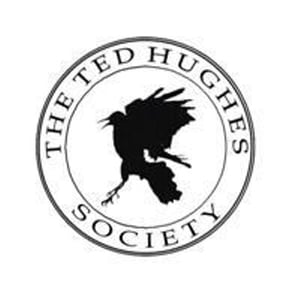Dramatic works by Ted Hughes
Blood Wedding (London: Faber and Faber, 1996)
Yvonne Reddick (Research Fellow, University of Central Lancashire) examines Hughes's translation of Lorca's play.
Ted Hughes’s new version of the surrealist Spanish playwright Federico García Lorca’s play Bodas de Sangre was first published by Faber and Faber in 1996. The Emory archive contains Hughes’s copy of David Johnston’s 1989 translation of the play, which formed the basis of this version. Blood Wedding (Bodas de Sangre) in a new version by Ted Hughes is a reworking of García Lorca’s text which gives primacy to the power of language, rather than props, costumes and physical space, as a mode of dramatic expression.
The play is set in rural Spain, where two wealthy landowning families hope to ensure the continuation of their lines and to increase their agricultural output by marrying off the Bride and Bridegroom. Premonitions of the coming revenge tragedy occur in the first act, when the Mother of the Bridegroom relates that both her husband and her other son were murdered by the Felix clan: her dead were ‘two men who were like two beautiful blossoms, and their murderers in prison, taking their ease’ [1]. Act One, Scene Two reveals that the Bride was once engaged to Leonardo Felix; her repressed longing for him is the reason for the ‘Black clouds. An icy wind blowing, here, deep inside’ [2], which she feels oppressing her on the morning of her wedding. Act Two, Scene Two sees Leonardo and the Bride elope on horseback to the shelter of a wood. The third act takes place in a Surrealist, oneiric natural landscape, inhabited by sinister Woodcutters, an animate Moon and the veiled figure of a beggar-woman who represents Death. These portentous figures anticipate the knife-fight in which Leonardo and the Bridegroom will kill one another.
Through Johnston’s translation and Hughes’s reworking of it, the regular, end-rhymed verse lines of the Spanish original are replaced with ragged, disjointed lines of varying lengths at moments of heightened poetic intensity. As the play moves from crisis to dénouement, García Lorca’s description of the knife, the instrument of tragedy, is infused with what Edwin Muir termed the ‘admirable violence’[3] of Hughes’s verse. While the play in the original language ends in regular lines neatly tied up with a full rhyme, ‘y allí se para, en el sitio/ donde tiembla enmarañada/ la oscura raíz del grito’ [4], Hughes’s version separates heavily stressed lines of a single syllable:
Till it stops, there,
In the quivering
Dark
Roots
Of the scream[5].
García Lorca’s meticulous stage directions and costume designs are also extensively cut by Hughes, leaving a raw, sparse translation which is more dramatic poetry than conventional theatre. The profound connection between rural folk and the natural world surrounding them is stressed repeatedly: the dying screams of Leonardo and the Bridegroom are stifled ‘By the voice of the trees, and the voice of the river’ [6]. Rooted in both agricultural landscapes and an omen-haunted wilderness, Hughes’s version of Lorca’s play has close thematic ties with his 1963surrealistic poem ‘After Lorca’, with Gaudete, that tragedy of ritual sacrifice and sexual liberation, and with the rural poetry of Moortown Diaries.
Yvonne Reddick is Research Fellow in Modern English and World Literatures at the University of Central Lancashire. She has published numerous articles on the poetry of Ted Hughes and her other other academic interests include the politics of environmental writing, French ecological theory, the poetry of Yves Bonnefoy and the use of mythology in texts of the Modernist era and beyond.
Notes
[1] Ted Hughes, Blood Wedding (Bodas de Sangre) in a new version by Ted Hughes, (London: Faber & Faber, 1996), p. 2. All further citations are from this edition.
[2] Hughes, Blood Wedding, p. 24.
[3] Ted Hughes, ‘Poetry and Violence’ in Winter Pollen, ed. William Scammell, (London: Faber & Faber, 1994, repr. 1995), p. 251.
[4] Federico García Lorca, Bodas de sangre: tragedia en tres actos y siete cuadros, ed. Mario Hernández (Madrid: Alianza Editorial, 1984, reprs 1986, 1988, 1989, 1994; first published in 1933), p. 171.
[5] Hughes, Blood Wedding, p. 72.
[6] Hughes, Blood Wedding, p. 53.
